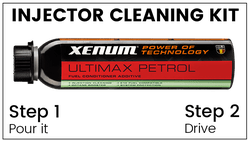- Become a Trade Customer Today.
- +44 (0)28 9066 6962
- mark@enginecsl.com
Solid lubricants: Molybdenum disulfide

Xenum & VGL Racing
July 3, 2018In recent articles we have discussed the nature of oils and how they need to be mixed with additives to prepare them for real-world problems. Even synthetic oils need additives to be cleaner and more stable than raw oil. However, even after the necessary additives, there is still a way to further upgrade your oil: solid additives. Enter the molybdenum additive.
Origin and main benefits
Molybdenum is classified as a metal in the Periodic Table of the Elements. In its natural form it can be found as molybdenite (also called molybdenum disulphide or MoS2).
All forms of Molybdenite have a layered structure, making this mineral an excellent lubricating material. Furthermore, the shear strength of molybdenite increases as the coefficient of friction increases, a property known as superlubricity. Do we need to say more?
Molybdenum additive uses
Thanks to its naturally low friction, liquid-molybdenum is widely used as an additive. MoS2 particles, around 1–100 µm in diameter, maintain a high lubricity and stability at engine operating temperatures in extreme and regular conditions.
It is commonly added to graphite in order to improve sticking. For that reason, you can see Molybdenum-based oils in critical applications such as aircraft engines because they keep their lubricity even in oil loss cases.
MoS2 is also employed as a catalyst in the petrochemical industry.
Molybdenum in Xenum
In our range of products we have two molybdenum additives. These are Super G and MG Gear, two products that have the aim of reducing friction in two critical friction points: the engine and the gearbox.
In both cases the molybdenum is mixed with carbon graphite, one of our most commonly used solid lubricants. We wil talk about that specific lubricant in future articles, so…
Stay tuned!
Don’t forget to subscribe to our newsletter and you will receive regularly a new article revealing how we design our products. Also, you will get exclusive access to our offers.
The post Solid lubricants: Molybdenum disulfide appeared first on Xenum Power of Technology.





